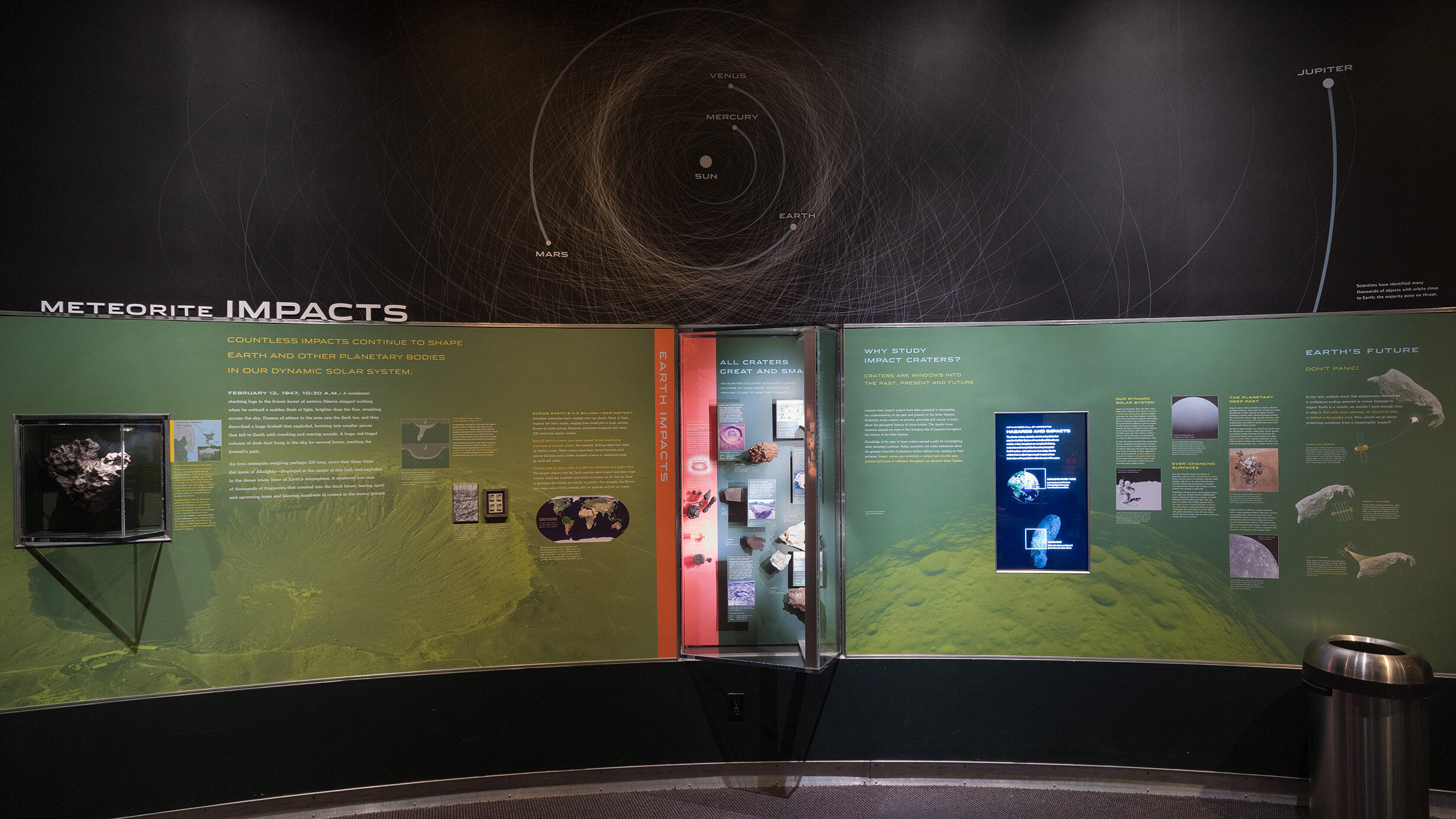Meteorite impacts
Part of Hall of Meteorites.

Countless impacts continue to shape Earth, other planets and moons in our dynamic Solar System.
February 12, 1947, 10:30 a.m.: A woodsman stacking logs in the frozen forest of eastern Siberia stopped working when he noticed a sudden flash of light, brighter than the Sun, streaking across the sky. Dozens of others in the area saw the flash too, and they described a huge fireball that exploded, bursting into smaller pieces that fell to Earth with cracking and roaring sounds. A huge, red-tinged column of dark dust hung in the sky for several hours, marking the fireball's path.
An iron meteorite weighing perhaps 100 tons, more than three times as much as Ahnighito—displayed at the center of this hall—had exploded in the dense lower layer of Earth's atmosphere. It shattered into tens of thousands of fragments that crashed into the thick forest, tearing apart and uprooting trees and digging hundreds of craters in the snowy ground.
©AMNH